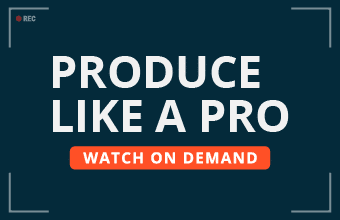Instagram is the most appropriate platform for both influencer marketing and ecommerce, and interestingly, you can combine both.
If you are an ecommerce business, you can work with influencers on Instagram to create strategically-targeted (ad) content for increased engagement and sales. The platform allows businesses to reach their audience in a way that feels more realistic or genuine.
While the influencer space on Instagram is expected to become a $10 billion industry by the end of 2021, for ecommerce, the platform helps as many as 80 percent of users make informed purchase decisions. Incredible!
People with a bulky follower base on Instagram can be potential influencers for your ecommerce products. As their followers idolize them for their unique views, lifestyle, likes, and dislikes, and love to engage on their updates proactively, you can consider going for a paid partnership with them for your ecommerce product marketing.
About 81 percent of people on Instagram research about products and services before they buy. What’s more, over 130 million users click or tap on shopping related posts on Instagram every day. And around 200 million users visit at least one brand profile on Instagram on a daily basis.
So for an ecommerce business, there are innumerable opportunities to find prospects and boost sales on Instagram.
Ecommerce & influencer marketing
More than 67 percent of brands use Instagram for influencer marketing. Over 75 percent of businesses on Instagram have a dedicated budget for influencer marketing and 90 percent of marketers strongly believe that it is an effective form of marketing.
On an average, businesses earn $5.20 for every $1 spent on influencer marketing. Surprisingly, top 13% of businesses make $20 or more for every dollar they pay. No other marketing platform or approach appears as promising as influencer marketing.
If you are an ecommerce business, and if you still do not have an Instagram influencer marketing strategy, there is no better time than this. You can polish your brand image on Instagram, connect with your prospects or audience, grow your follower base, deliver customer service, and multiply your sales. Let’s see how.
Find the right influencer
If you are getting started with Instagram influencer marketing for your ecommerce, set off by finding an influencer that is right for your industry and brand. Make sure that the influencer is active and popular within the niche.
Try to answer these questions while you search for an ideal influencer:
- Is he/she a customer of your brand? Or of a similar brand?
- Have they used your product?
- Would they love to promote or advocate your brand?
- Can they create promotional content or are they a creator?
- How many followers do they have?
On the basis of follower count, we can classify influencers in five categories:
- Mega Influencers (more than 1 million followers)
- Macro Influencers (500k to 1 million followers)
- Mid-tier Influencers (50K to 500K followers)
- Micro Influencers (10K to 50K followers)
- Nano Influencers (1K to 10K followers)
Working with micro and nano influencers is more cost effective—not because they are less expensive, but because they translate better outcomes for every campaign.
Despite the fact that the number of follower is not necessarily a success-defining factor, the cost of your influencer marketing campaign goes up with the number of followers your influencer has.
But whether you need a celebrity influencer or a micro influencer will depend largely on the type of product, your expectations, and budget. Understand your product, budget, and goals before joining hands with an influencer for your ecommerce product marketing.
Pro Tip: Work with influencers who are already working as influencers and also, on the basis of their past performance.
Build effective relationship with influencer
Prepare a list of potential influencers on Instagram, and start engaging with them regularly. And this would involve you acting as a follower.
Introduce your brand and products to them, along with your goals and expectations. Explain how your brand fits into their (or your target audience’s) needs.
Discuss your terms & conditions, brand message and tone, and finalize the idea and format of your influencer marketing campaign during the first few conversations.
Talk about and document everything that needs to be done, including your goals, budget, and activities to be performed. If you are working with micro or nano influencers, then you should pay a fair compensation in form of money or free gifts or both.
Product reviews
Over 92 percent of people trust and follow personal recommendations when it comes to choosing brands or buying products they need.
That’s the reason why feedbacks, testimonies, recommendations, and product reviews are the most common influencer marketing contents. Brands hire influencers to review (or in other words, to say a few positive words about) their products and encourage the audience to take a desired action in your favor.
You and the influencer should brainstorm over the type or idea of Instagram post, story, or reel to be created at the beginning of each campaign.
When someone you trust recommends a product, you tend to believe his words and try that product in near or farther future. Influencer marketing works the same way. It aims to change the minds and influence the buying decision of a group of audience—following this rule of psychology.
You can ask your influencer to try and review your products by sharing a blog post detailing the features of your product, an image with your product with its features and upsides in the caption, or an explainer, review, or how-to video using your product. Campaigns like these generate views, engagement, clicks, and eventually leads and sales.
And this way, about 71 percent of buyers get influenced by social media influencers.
Instagram influencer marketing enables brands to find audience with the help of influencers—the people who have the potential to influence people with their strong and powerful conversational skills and unbiased opinions.
While creating or fine-tuning your influencer marketing strategy, you must keep the Federal Trade Commission’s (FTC) guidelines in the center. Evidently, each country has different rules and regulations for influencer marketing, and marketers and influencers should build their campaigns accordingly.








